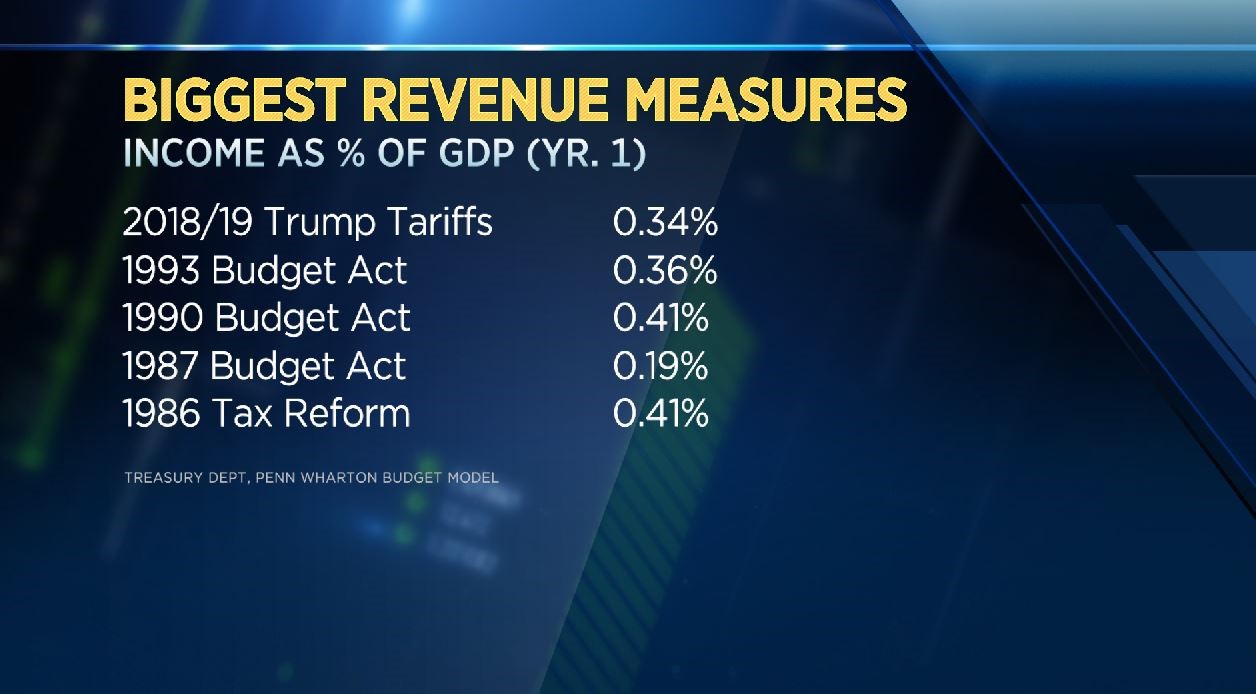U.S. President Donald Trump listens to a question from a member of the media before boarding Marine One on the South Lawn of the White House in Washington, D.C., U.S., on Tuesday, May 14, 2019.
Al Drago | Bloomberg | Getty Images
President Trump, having championed one of the larger tax cuts in recent years, has now enacted tariffs equivalent to one of the largest tax increases in decades.
A CNBC analysis of data from the US Treasury Department would rank the combined $72 billion in revenue from all the president's tariffs as one of the biggest tax increases since 1993. In fact, the tariff revenue ranks as the largest increase as a percent of GDP since 1993 when compared to the first year of all the revenue measures enacted since then, according to the Treasury Department data.
Only the revenue raised in the fourth year of the Affordable Care Act is greater, but not by much.
The non-partisan Tax Foundation estimates all the tariffs enacted by the president, including the latest increase from 10% to 25% on $200 billion on Chinese goods, will raise $72 billion in revenue, equal to 0.34% of US gross domestic product. Revenue raised in the first year of 1993 budget and reconciliation act equaled 0.36% of GDP.

"It's certainly not the largest tax increase in history but it does rank among some of the bigger tax proposals over the last 20 years that have raised revenues,'' said Kyle Pomerleau, chief economist with the Tax Foundation.
The revenue raised from the tariffs is more than the tax increases from the first three years of the Obama administration's ACA, according to the Treasury department's data. Only in year four of the ACA, when revenue rose by an estimated 0.46% of GDP, did it raise more than the estimate from President Trump's tariffs.
Key differences
Of course, there are key differences between a tax cut and a tariffs.
President Trump says that Chinese companies pay the tariffs. But most economists see them being borne by U.S. businesses and consumers. That is, they are essentially a tax increase. Over time, however, consumers and businesses can reduce this tax hit by substituting away from high-priced goods and Chinese production. Some of that production could come back to the US or simply move to other countries.
Kent Smetters of the Penn-Wharton Budget Model, and a former Treasury official during the Bush administration, estimates that the tariff increase will cost the median US household with earnings of $61,000 about $500 to $550 a year. It's the equivalent, he said, of raising the social security retirement tax by 1 percent point to 11.6%.
Such a large revenue measure, according to Pomerleau, if it were a tax, would have been subject to considerable economic analysis from the Congressional Budget Office or the Joint Committee on Taxation for the potential effects on growth, inflation and jobs. No such analysis has been offered or is believed to have been conducted by the administration of the current tariffs.
And the revenue measure is by far the largest enacted without congressional approval. Congress, in a series of laws, has ceded to the president vast powers to levy tariffs.

No comments:
Post a Comment